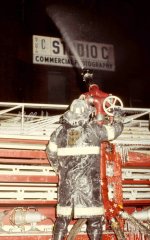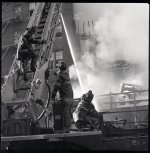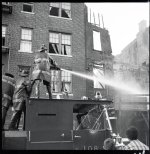- Joined
- Sep 7, 2020
- Messages
- 2,317
FDNY had been creative with the earlier editions of Portable Master Streams, allowing them to be affixed to the apparatus but removable if necessary. The Multiversals (quite heavy and bulky to carry) were mounted on top of the Mack C Cabs in the late 50's and 60's but could easily be disconnected and carried to a remote location. They were capable of being fed by up to 3 - 2.5" lines and have variable tips sizes typically allowing 600-800-1000 GPM flows.
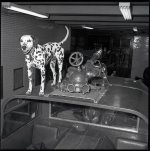
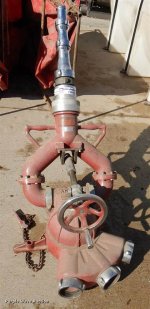

Then came the Stang guns on the 1968 and up series Mack CF's. These were lighter in weight than the multiversals, and easier to carry when removed from the top of the apparatus. Located on top of a built up tread-late box which was located on top of the pump house it was fed by one or two 2-1/2" lines. When removed from the rig for remote use, it was attached to a trifold collapsible ground pad that was grated. A member operating this could stand on the grate and operate the Stang.
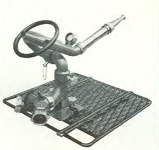

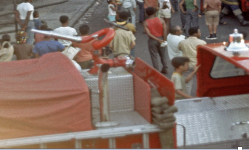
Later on into the 80's the Akron Apollo type FDNY Spec monitor was introduced, much smaller and lighter than all previous portable master streams.
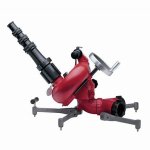
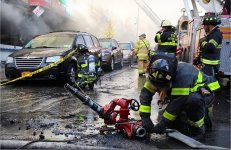
Today, the TFT blitzfire is growing in use and popularity within FDNY. Although around for over 20 years, The FDNY placed them on a limited number of specialty units although Battalion Chiefs seem to be using them more frequently on multiple alarm jobs in warehouses, taxpayers, etc. The Blitzfire only flows up to 500 GPM but is very lightweight, highly mobile (easily maneuvered like a single 2.5") and is fed by a single line.
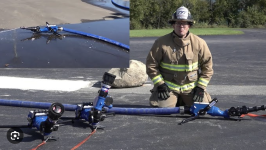
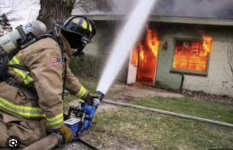



Then came the Stang guns on the 1968 and up series Mack CF's. These were lighter in weight than the multiversals, and easier to carry when removed from the top of the apparatus. Located on top of a built up tread-late box which was located on top of the pump house it was fed by one or two 2-1/2" lines. When removed from the rig for remote use, it was attached to a trifold collapsible ground pad that was grated. A member operating this could stand on the grate and operate the Stang.



Later on into the 80's the Akron Apollo type FDNY Spec monitor was introduced, much smaller and lighter than all previous portable master streams.


Today, the TFT blitzfire is growing in use and popularity within FDNY. Although around for over 20 years, The FDNY placed them on a limited number of specialty units although Battalion Chiefs seem to be using them more frequently on multiple alarm jobs in warehouses, taxpayers, etc. The Blitzfire only flows up to 500 GPM but is very lightweight, highly mobile (easily maneuvered like a single 2.5") and is fed by a single line.




